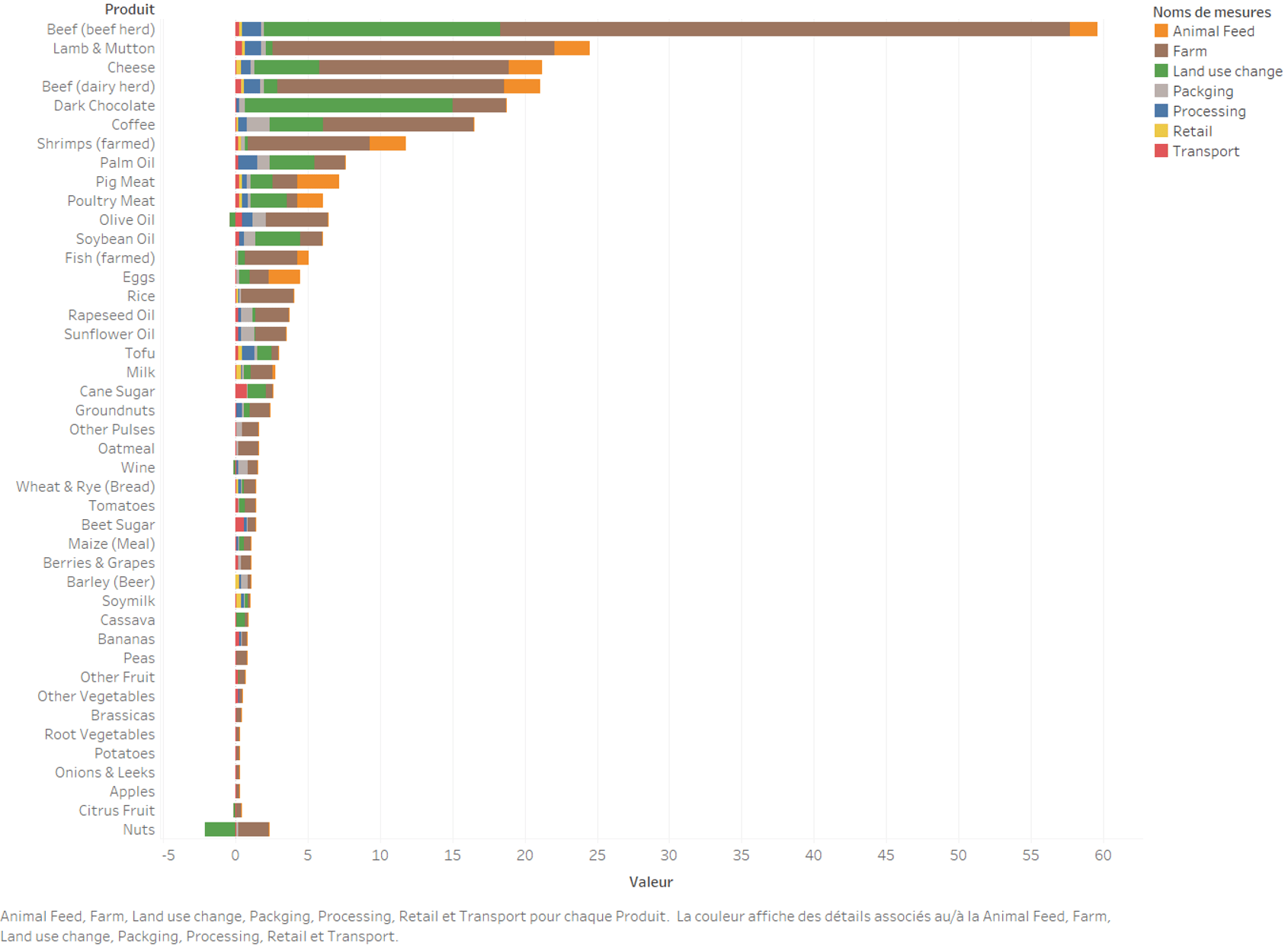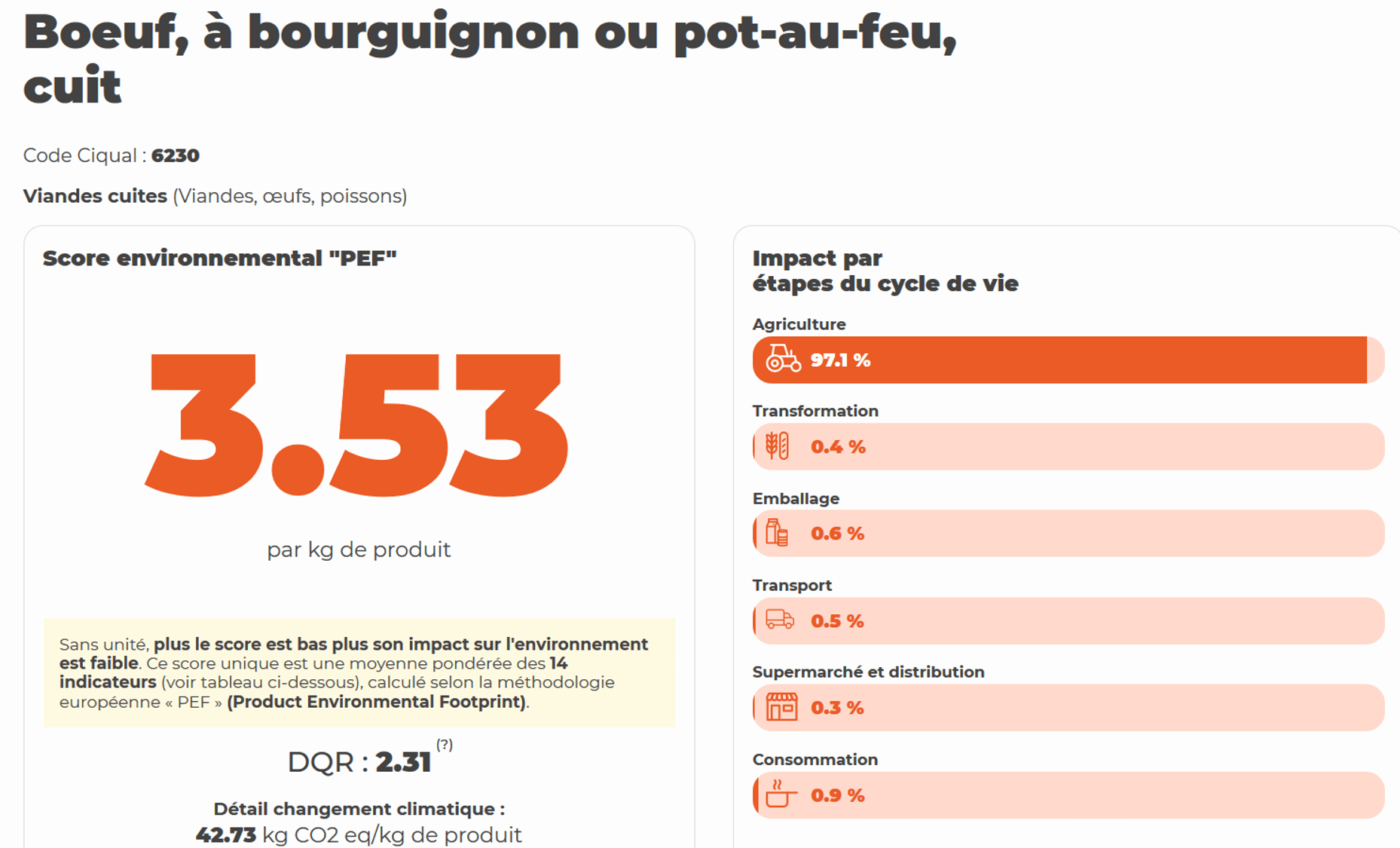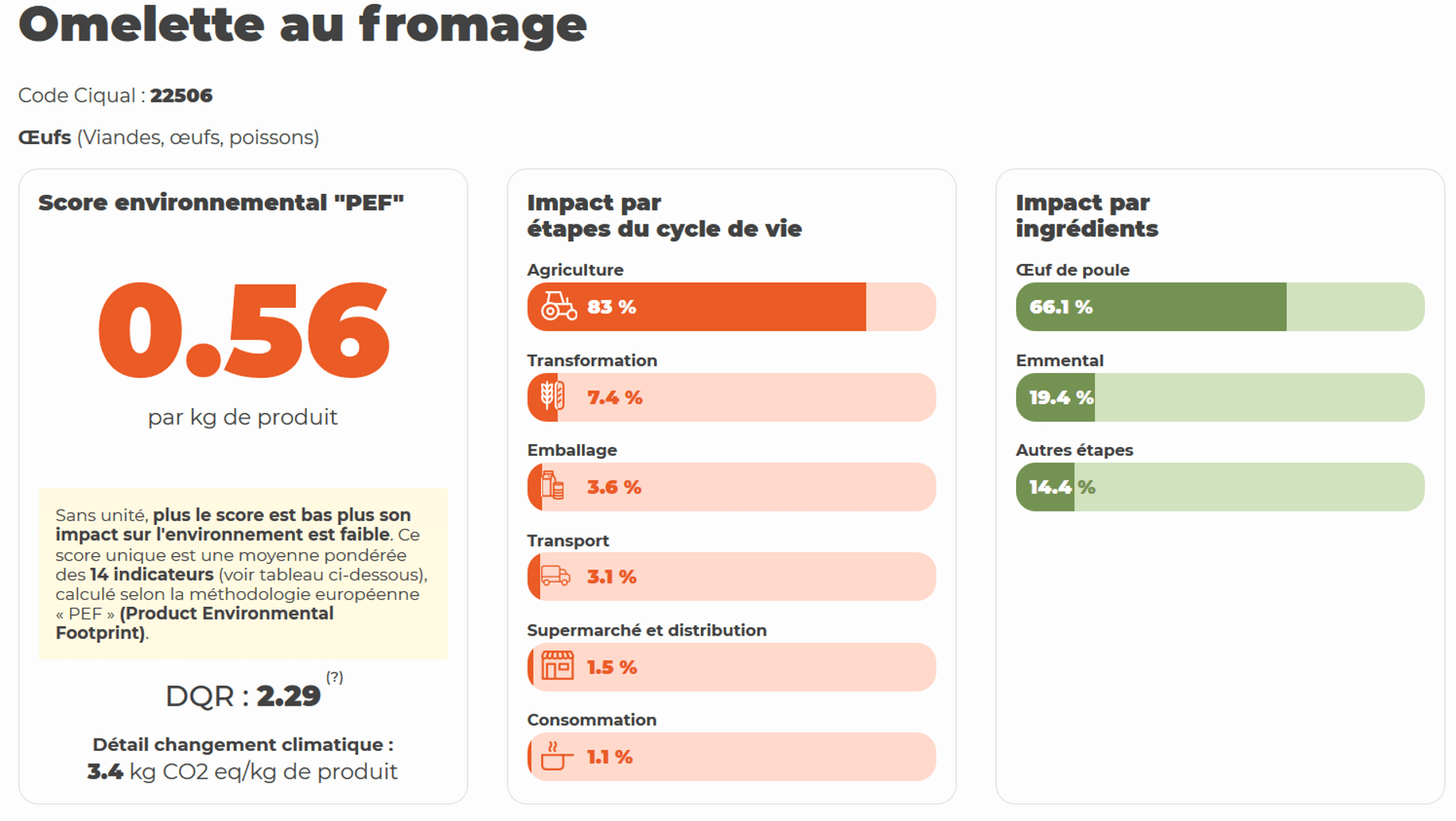How can we reduce the carbon footprint of our food?
How to calculate the environmental impact of meals?
Should I buy locally?
This article tries to answer these questions from the qualified data.
How can we reduce the carbon footprint of our food? Eating local is the solution?
Food production accounts for a quarter of global greenhouse gas emissions.
“Eating local” is a recommendation you often hear to provide an answer to the problem.
While this may make sense intuitively this is not the wisest advice.
Eating locally would only have a significant impact if transportation was responsible for a large part of the food’s carbon footprint.
For most foods, this is not the case. Transportation-related GHG emissions account for an exceedingly small amount of food emissions.
What you eat is much more important than where your food comes from.
In the visualization below, we see the emissions of certain food products: from beef to nuts.
For each product, you can see at what stage of the supply chain its emissions come from.
Source: Ourworldindata.org
This is the largest meta-analysis of global food systems to date, published in Science by Joseph Poore and Thomas Nemecek (2018).
This metric considers not only CO2 but all greenhouse gases.
The most crucial point of this study is that there are massive differences in GHG emissions from different foods.
The carbon footprint of animal foods
Overall, animal foods tend to have a higher footprint than plant-based foods.
Both lamb and cheese emit more than 20 kilograms of CO2 equivalent per kilogram.
Poultry and pork have a lower footprint but are still higher than most plant-based foods.
For most foods, most GHG emissions result from changes in land use and processes at the exploitation stage.
Emissions at the farm stage include processes such as the application of fertilizers (both organic and synthetic) and methane production in cattle stomachs.
Land use and emissions at the exploitation stage account for more than 80% of most food footprints.
Transportation is a small contributor to emissions. For most food products, it is less than 10%, and it is much less important for the largest emitters of GHGs.
Household Impact Study in the United States
In a study published in Environmental Science and Technology, Christopher Weber and Scott Matthews (2008) studied the relative climate impact of food miles and food choices in U.S. households.
Their analysis showed that substituting less than one day per week for beef and dairy products reduces GHG emissions more than buying all your food from local sources.
The danger of the local at all costs
There are also some cases where eating locally could increase emissions. In most countries, many foods can only be grown and harvested at certain times of the year. But consumers want them all year round. This gives us three options: import goods from countries where they are in season; Use energy-intensive production methods (such as greenhouses) to produce them year-round; or use refrigeration and other conservation methods to keep them for several months.
Tomatoes produced in greenhouses in Sweden consumed ten times more energy than importing tomatoes. Europe where they were in season.
What food is transported by air?
Extraordinarily little food is transported by air; it represents only 0.16% of food miles.
Most of the foods that people think come by air are transported by boat—avocados and almonds are perfect examples.
Shipping a kilogram of avocados from Mexico to the UK would generate 0.21 kg of CO2 equivalent in transport emissions. This represents only about 8% of the total avocado footprint.
How do we know which products to avoid?
These are usually highly perishable foods. This means that they must be eaten shortly after harvest. In this case, shipping is too slow, leaving air travel as the only option.
Asparagus, green beans and berries are commonly transported by air.
This makes them difficult to avoid. A general rule is to avoid foods that have a noticeably short shelf life and have come a long way (many labels indicate the country of origin, which helps with this). This is especially true for foods where the emphasis is on “freshness”: for these products, the speed of transport is a priority.
Carbon footprint calculation of meals: the Agribalysis website
The AGRIBALYSE® program has been providing a database and reference for environmental analysis of food products since 2010. The data are based on the Life Cycle Analysis (LCA) method.
This method provides indicators of the impacts of the products we eat, including all the steps involved in the manufacture of products (from the field to the plate) and taking into account various environmental issues (climate, water, air, soil …).
At each stage of the chain, balances of materials, energy and pollutant emissions are conducted and aggregated in the form of a set of environmental indicators: 16 indicators are provided for each product.
How does Agrybalysis work?
First, you have to go to the site: agribalyse.ademe
If, for example, in the search engine you insert “Boeuf Bourguignon”, you can see the result below:
The environmental score “PEF” is equal to 3.53.
PEF is the new European rating system that could become the global standard, the aim is to objectively define the environmental footprint of products and to give them a rigorous measurement method common to all EU countries.
What about a cheese omelet?
Global meat consumption balance sheet
While meat consumption is decreasing in Europe, it continues to increase globally: the Asian continent now consumes almost half of the world’s production.
The Data Visualization presented by the website Our Word in Data using FAO data shows us the evolution of global meat consumption.
The chart is interactive, so don’t hesitate to adjust the settings to your liking.
Conclusions
How can we reduce the carbon footprint of our food?
This article cannot and will not go around the issue. However, it tries to communicate qualitative and qualitative information around a topic at the heart of current issues.
It is up to everyone to draw their conclusions and act accordingly.
Don’t hesitate to react in the comments to express your opinion.
If you would like to speak on my blog, I invite you to write to me.
Take care of yourself!
Sources:
https://ourworldindata.org/food-choice-vs-eating-local
https://www.credoc.fr/publications/les-nouvelles-generations-transforment-la-consommation-de-viande
https://ourworldindata.org/grapher/meat-supply-per-person
http://www.fao.org/faostat/en/#data/FBS
You can also discover the other sections of the site, in which I write articles on topics that I am deeply passionate about: education, well-being, environment, travels.




